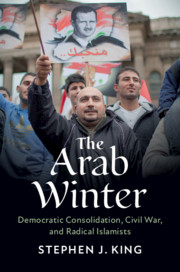3 - Libya
Published online by Cambridge University Press: 14 February 2020
Summary
The Libyan case study in Chapter 3 reveals how harrowing the introduction of democratic elections can be in countries without national unity or any of the attributes of a modern state. Qaddafi’s ideology of a stateless, egalitarian society based on an idiosyncratic blend of Islamic and Marxist concepts left Libya’s transitional regime largely without a bureaucratic apparatus to implement policies. Qaddafi had also reinvigorated Libya’s tribal system by favoring his own and punishing the region and tribes that were the base of support for the prior monarchical regime. Competitive elections in Libya were implemented in a country without a national military that could monopolize the use of violence. In its place, during the civil war, a welter of regional, local, tribal, and ideological militias – some more powerful than the “national military” – emerged and prevented transitional governments from being able to provide peace and security for Libyans. There was also a military strongman in Libya, General Haftar, seeking to utilize the near anarchic conditions to forge a military authoritarian regime – by reining in the militias and providing desperately needed security.
- Type
- Chapter
- Information
- The Arab WinterDemocratic Consolidation, Civil War, and Radical Islamists, pp. 157 - 210Publisher: Cambridge University PressPrint publication year: 2020



